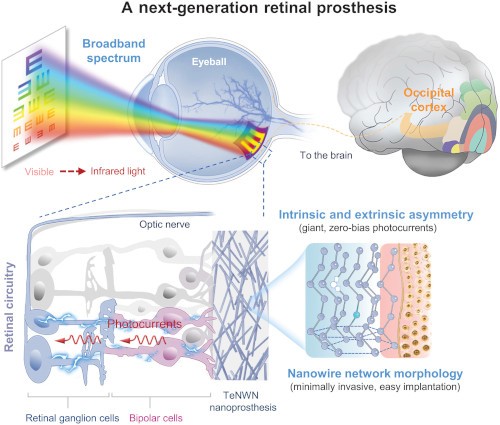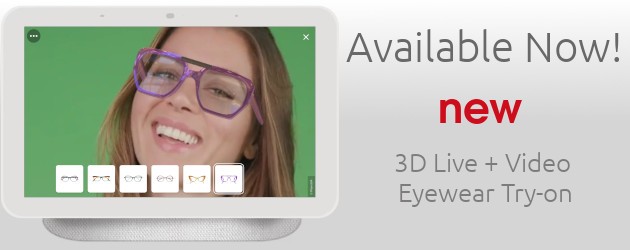Industry News
Tellurium Nanowire Retinal Implants Pave Way for Next-Gen Vision Restoration
 A new retinal implant developed by a team of researchers could represent a major leap forward in vision restoration for blind and visually impaired individuals. The neuroprosthesis, built using tellurium nanowire networks (TeNWNs), has demonstrated the ability to restore vision in blind mice and non-human primates, uniquely converting both visible and infrared light into neural signals without requiring external power.
A new retinal implant developed by a team of researchers could represent a major leap forward in vision restoration for blind and visually impaired individuals. The neuroprosthesis, built using tellurium nanowire networks (TeNWNs), has demonstrated the ability to restore vision in blind mice and non-human primates, uniquely converting both visible and infrared light into neural signals without requiring external power.
The research, recently published in Science, outlines how this next-generation implant mimics and extends natural vision capabilities by tapping into the infrared spectrum, which is typically invisible to the human eye. Infrared light perception is common in some animals, like snakes, which use it to navigate in darkness. The new device opens the possibility of providing a similar enhanced perception to humans.
A Simpler, Broader-Spectrum Solution
Current-generation retinal prostheses typically rely on photodiodes or nanoparticles that require external hardware or surgical complexity, which has limited their clinical adoption. The TeNWN-based implant, by contrast, works autonomously: the engineered nanowires generate strong photocurrents across a broad light spectrum, including near-infrared wavelengths, using only incident light, with no need for electrical stimulation or bulky equipment.
“Tellurium nanowires offer a rare combination of strong light absorption, narrow bandgaps, and engineered asymmetries that result in spontaneous, broadband photocurrents,” the researchers reported. “This enables restoration of vision across the visible and near-infrared range at light intensities well within clinical safety thresholds.”
Proven in Mice and Monkeys
When implanted in blind mice, the prosthesis replaced damaged photoreceptors and activated both the optic nerve and the visual cortex. Treated animals demonstrated improved light-driven behaviours and pupil responses, even under dim lighting conditions nearly 80 times lower than standard clinical limits.
In tests involving nonhuman primates (Macaca fascicularis), the device integrated securely in the subretinal space and elicited strong neural responses to both visible and infrared stimuli. Crucially, it did so without disrupting normal vision, offering an early glimpse at the potential for future human applications.
Potential for Clinical Translation
The findings lay the groundwork for future human trials and provide a compelling platform for medical device companies and biotech investors focused on ophthalmology, neural interfaces, and nano-enabled healthcare solutions.
The TeNWN prosthesis is minimally invasive to implant, highly biocompatible, and does not require external batteries or wearable equipment, key attributes that improve patient safety and simplify regulatory pathways. Its dual-spectrum capability could eventually allow users not just to regain lost sight but to perceive more of the world than sighted individuals typically can.
“This technology could redefine what's possible in visual neuroprosthetics,” the authors concluded. “By restoring lost function and expanding sensory capability, it represents a transformative approach to vision restoration.”



